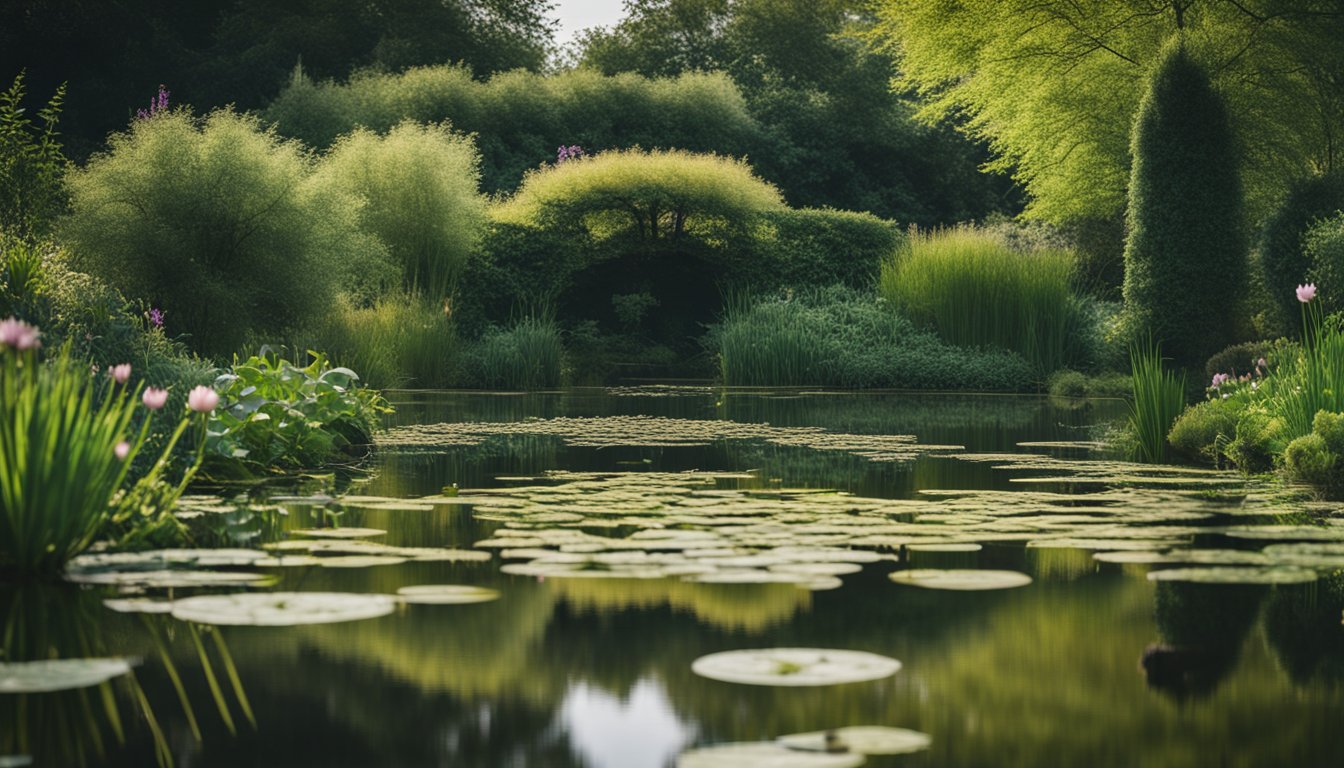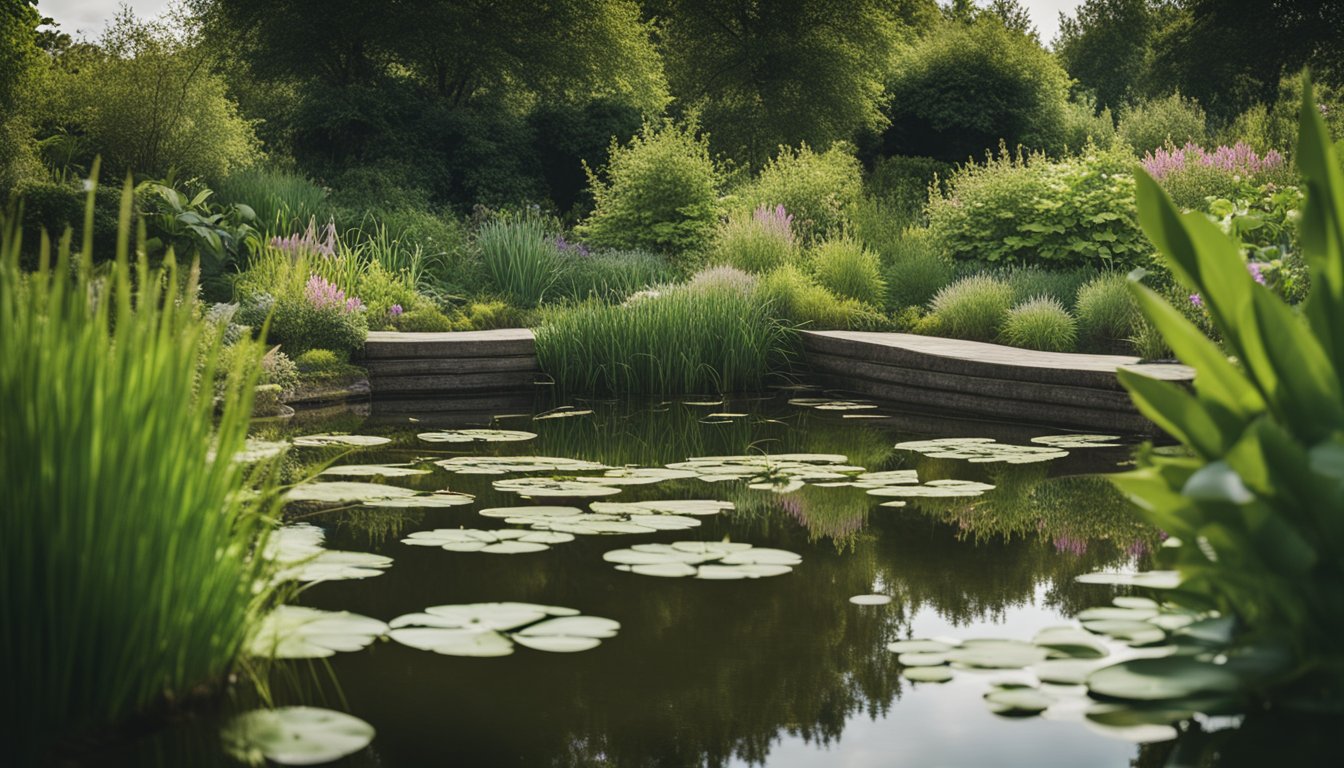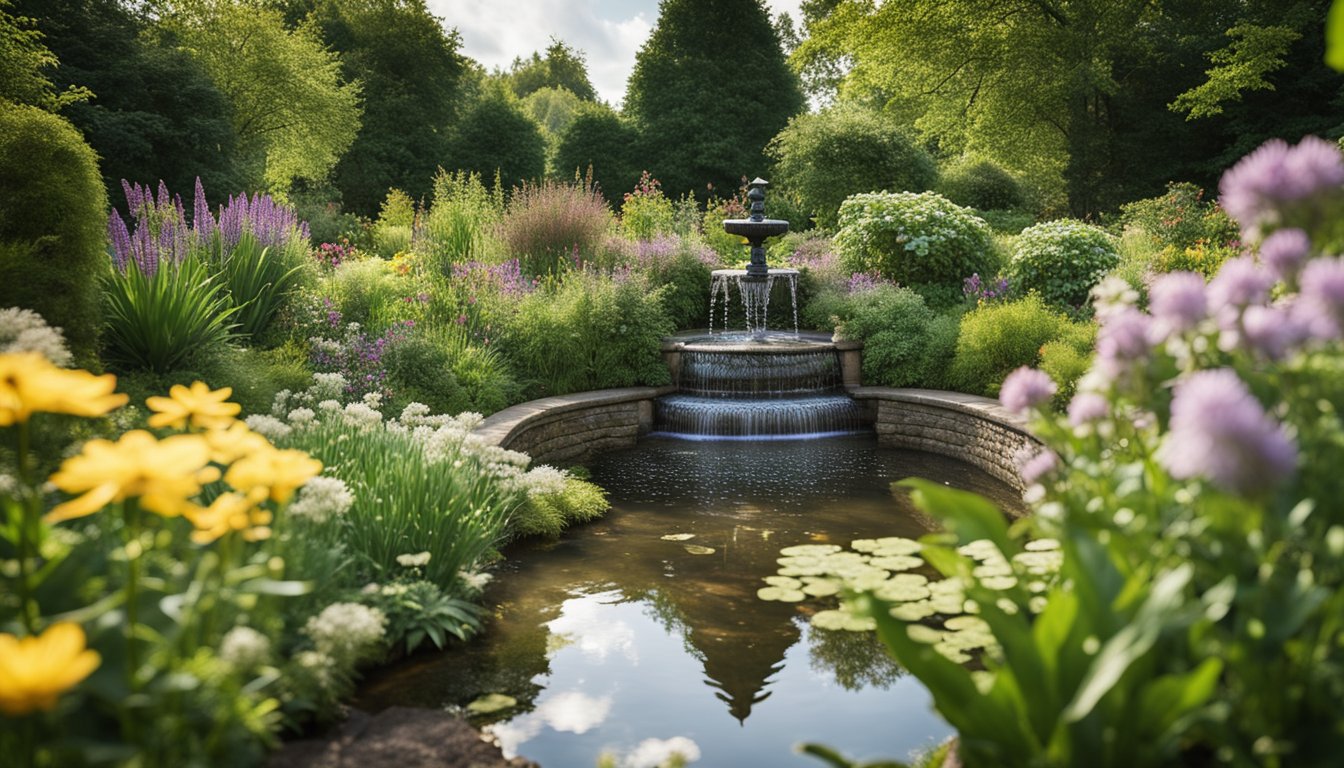Late updated: 04 Apr 2025 12:04
Written by: Emily Thornton
Enhancing UK Gardens With Native Water Features: Boosting Biodiversity and Aesthetic Appeal
Enhancing our gardens with native water features offers a unique way to cultivate a beautiful and sustainable outdoor space. By integrating native plants and creating various water habitats, we can design a garden that not only looks stunning but also respects and supports local ecosystems. Incorporating water features like ponds or fountains can attract a diverse range of wildlife, enhancing biodiversity right in our backyards.

Water features aren't just decorative; they are pivotal for maintaining a vibrant wildlife garden. Native plants thrive alongside these water features, creating habitats for birds, insects, and small mammals. This blend of water and greenery not only adds aesthetic value but also plays a crucial role in sustaining local fauna.
Choosing the right water features for our garden design is essential. It’s not about grandeur but suitability—ensuring each water element integrates seamlessly within the landscape and supports our environmental goals. Our commitment to thoughtful design helps create a harmonious and thriving garden environment.
Key Takeaways
- Native water features boost garden biodiversity.
- Integrating native plants supports local wildlife.
- Thoughtful design enhances garden sustainability.
Developing a Water Garden With Native Features

Creating a water garden that incorporates native features involves keen planning and thoughtful design. We will focus on choosing the best location and style, using native plant life effectively, and installing sustainable water features that enhance biodiversity and support local wildlife.
Choosing the Right Location and Style for Your Garden
Selecting the perfect spot is vital for a successful water garden. It should be situated in an area with partial sunlight to balance light exposure, promoting healthy plant growth while preventing excessive algae buildup.
In terms of style, consider natural materials like stone to maintain clean lines and a harmonious appearance. A reflecting pool or bubbling fountain can serve as focal points. Incorporating fresh water features such as a wall fountain or small streams can mimic natural habitats, creating an inviting environment for both flora and fauna. Design elements should complement the existing garden layout, ensuring a seamless transition between terrestrial and aquatic spaces.
Incorporating Native Plant Life
Incorporating native plant species is essential for promoting biodiversity. Aquatic plants like water lilies and irises are not only visually appealing but also improve water quality by providing oxygen and shelter for aquatic creatures. Floating plants and oxygenating plants further enhance the ecosystem, creating an ideal balance.
Plants like astilbe and hosta thrive along the water's edge, enhancing the transition between land and water. These species attract and support local wildlife, ensuring a flourishing habitat. The key is to maintain a variety of plants that provide different textures, heights, and seasonal interest, all chosen for their compatibility with the local environment.
Installing Sustainable Water Features
Sustainable water features are crucial for maintaining an eco-friendly garden. Opting for rainwater collection systems reduces dependence on external water sources, ensuring the garden remains lush and vibrant. Proper irrigation strategies and filtration systems will maintain water clarity and prevent stagnation.
Ponds and waterfalls not only enhance aesthetic appeal but also serve practical purposes by keeping the water moving, which is vital for preventing mosquito breeding and supporting aeration. Everywhere possible, we should use energy-efficient pumps to lower the environmental footprint, ensuring that our garden not only looks beautiful but remains sustainable for future generations.
Attracting and Protecting Wildlife
To nurture a thriving ecosystem in our gardens, it's vital to include water features that attract and protect local wildlife. By creating habitats and supporting biodiversity, we enable birds, amphibians, and invertebrates to flourish. Attention to these crucial elements helps sustain nature's balance.
Creating Habitats for Birds and Amphibians
Integrating a pond or bird bath into our gardens serves as an essential resource for birds and amphibians. Layers of vegetation around a water source provide essential food and shelter. Birds are instinctively drawn to the soothing sound of trickling water, making a fountain or small waterfall particularly appealing.
For amphibians like frogs and newts, a shallow pond with gradually sloping sides is ideal. It allows for easy access and exit. These water features support the lifecycle of species, from tadpoles to adults. Layered planting around the water edge—using native plants—enhances the habitat, offering places for creatures to hide and thrive.
Encouraging Invertebrates and Beneficial Bacteria
Encouraging a diverse array of invertebrates—such as dragonflies—in our gardens enriches the ecosystem. Ponds with still, open water attract these creatures while providing habitat for larvae. Plants like water lilies can offer shaded areas essential for invertebrates.
To promote beneficial bacteria, it's crucial to maintain a balanced environment. Avoid using chemicals that can harm these important microorganisms, which help break down organic materials. This balance aids in maintaining water clarity and health, benefitting all pond inhabitants. As hedgehogs and other animals benefit from a rich invertebrate population, fostering this biodiversity is key.
Frequently Asked Questions

Incorporating native water features into UK gardens can enrich biodiversity while supporting local wildlife. From choosing the best plants to considering costs and managing water runoff, there are several aspects to explore.
What are the best plants to use in UK native water features?
Native plants like yellow flag iris, marsh marigold, and water mint thrive in UK water features. These species not only adapt well to local conditions but also support a diverse range of wildlife. Choosing plants that are naturally suited to the environment can minimise maintenance and enhance ecological balance.
How much does it typically cost to install a native water feature in a UK garden?
The cost can vary significantly based on size and complexity. A small pond with simple features may start at a few hundred pounds, while more elaborate designs, including advanced filtration and landscaping, could reach several thousand pounds. Budgeting for maintenance is also advisable to ensure long-term success.
What are the common drawbacks of setting up a rain garden?
The main challenges in creating a rain garden include ensuring proper drainage and preventing water stagnation. The initial setup may require significant effort to establish an area that effectively manages water flow. Regular maintenance is essential to preserve its functionality and aesthetic appeal over time.
Is it advisable to use rainwater to fill a garden pond, and if so, how can this be done?
Using rainwater to fill a pond is environmentally friendly and cost-effective. Collecting rainwater through guttering systems and directing it to the pond can reduce reliance on tap water. It’s vital to maintain a balanced supply to prevent overflow or underfill, ensuring the health of aquatic life.
What is the best way to create a rain garden in an area with clay soil?
In clay-rich areas, improving drainage is crucial. We can enhance soil permeability by incorporating organic matter and sand into the top layers. Raised beds or using slope contours to guide water can prevent excess pooling, transforming challenging clay soils into a functional rain garden habitat.
Which plants are most effective for managing water runoff in UK gardens?
Grasses such as purple moor grass and rushes like soft rush excel in managing water runoff. They absorb excess moisture efficiently while providing habitat for wildlife. Additionally, deep-rooted species such as sedges can help stabilise soil, preventing erosion and promoting sustainable water management in gardens.
